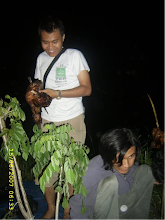At the beginning of Islam the main source of state revenue is khums, sodaqoh nature, charity, kharaj (land tax) and jizya (tax collection). Khums issued in 2 hijra. Sodaqoh nature is also required in 2 hijra. Kharaj withdrawn at 7 years of Hijrah, after the bow of Khaibar. Zakat is required in the year 8 Hijri and jizya determined in 8 migrate as well (Sadr, 1989). At the time of the Prophet, government policies relating to state revenues are distributed all income received. The policy was changed at the time of Caliph Omar. At that revenue rose sharply and Baitul Maal permanently established in the city center and the provincial capital, which still remains
Khums in Arabic means one fifth. Khums is one source of income Baitul Maal, as mentioned in the Qur'an (8:41). A fifth is for Allah and His Messenger is to be used for the state public welfare (Pickthall, 1969). Prophet membagai usually khums into three parts, first part for himself and his family, the second to the third part of his relatives and to orphans, those in need and those who were on their way. Four-fifths of the other part is divided among the soldiers who participated in the war (in certain cases some people who did not participate in the war also get a share). The rider got two parts (for himself and his horse), the soldier, a woman who attended the war to help some things do not get a share of the spoils of war (Sabzwari, 1984).
In the second year after Hijrah required sodaqoh nature. Sodaqoh is also known as Zakat Al-Fitr is compulsory every fasting month of Ramadan. The amount of Sha dates, wheat (barley), flour cheese or raisins, or half-Sha wheat for every Muslim, slave nor free, male or female, young or old, and paid before the Id prayer (Bukhari, 1979).
Kharaj refers to income derived from rents of agricultural land and forests belonged to the Ummah. If the cultivated land and orchards owned by non-Muslims fell into the hands of Muslims due to losing the battle, these assets become part of the public ownership of Muslims. Therefore, anyone who wants to cultivate the land must pay the rent. Revenue from this lease is included in the scope kharaj. An example is the rent collected over some land in Khaibar, which is war booty and a Muslim public ownership (Sadr, 1989). When Khaibar was conquered, the land was taken over by the Muslims and old owners to cultivate the land offered as a substitute for land rent and are willing to give some production to the state. Kharaj amount of land still being half of the production. The Prophet used to send people who have knowledge in this matter to estimate the amount of production. After reducing the excess of the estimated one-third, two-thirds of their distributed and are free to choose, accept or reject the division. The same procedure was also applied in other areas. Kharaj became an important source of income (Sabzwari, 1984).
Selasa, 10 November 2009
0 PRIMARY STATE INCOME AT BEGINNING OF PERIOD ON ISLAM (1)
Diposting oleh Information on 14.26 · 0 komentar

Langganan:
Posting Komentar (Atom)
eNews & Updates
Search 2.0
Recent Posts
Labels
- Bisnis (11)
- Budaya (12)
- Kabar Daerah (1)
- Teknologi (4)
Tags
- Bisnis (11)
- Budaya (12)
- Kabar Daerah (1)
- Teknologi (4)
Blog Archive
-
▼
2009
(11)
-
▼
November
(11)
- Muhammad The Real Enterprenuer
- Preemtive Strategy
- ENTREPRENEUR VIRUS
- FISCAL POLICY ON THE RASULULLAH S.A.W. ERA
- MARKETS ON ROSULULLAH ERA (1)
- PRIMARY STATE INCOME AT BEGINNING OF PERIOD ON ISL...
- MONETARY POLICY IN FIRT CENTURY OF ISLAM
- DEVELOPMENT INVESTMENTS ON RASULULLAH (1)
- Changing Dollars To The Dinar
- Wakaf
- Hikmah Concluding
-
▼
November
(11)

komentar
0 Responses to "PRIMARY STATE INCOME AT BEGINNING OF PERIOD ON ISLAM (1)"Speak Your Mind
Tell us what you're thinking...
and oh, if you want a pic to show with your comment, go get a gravatar!